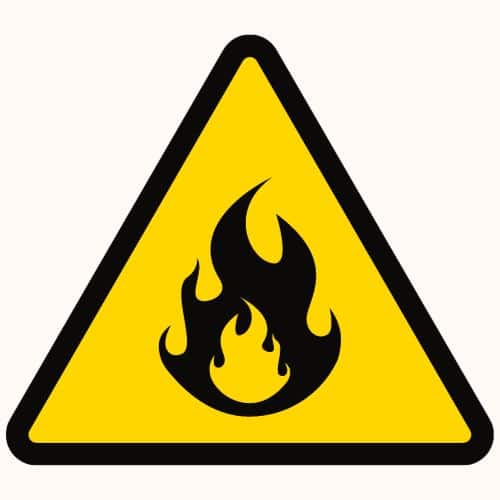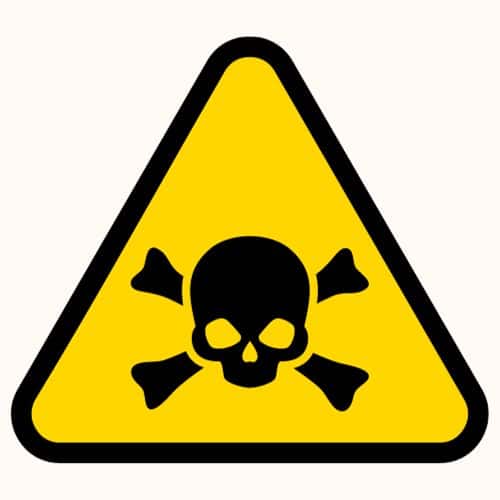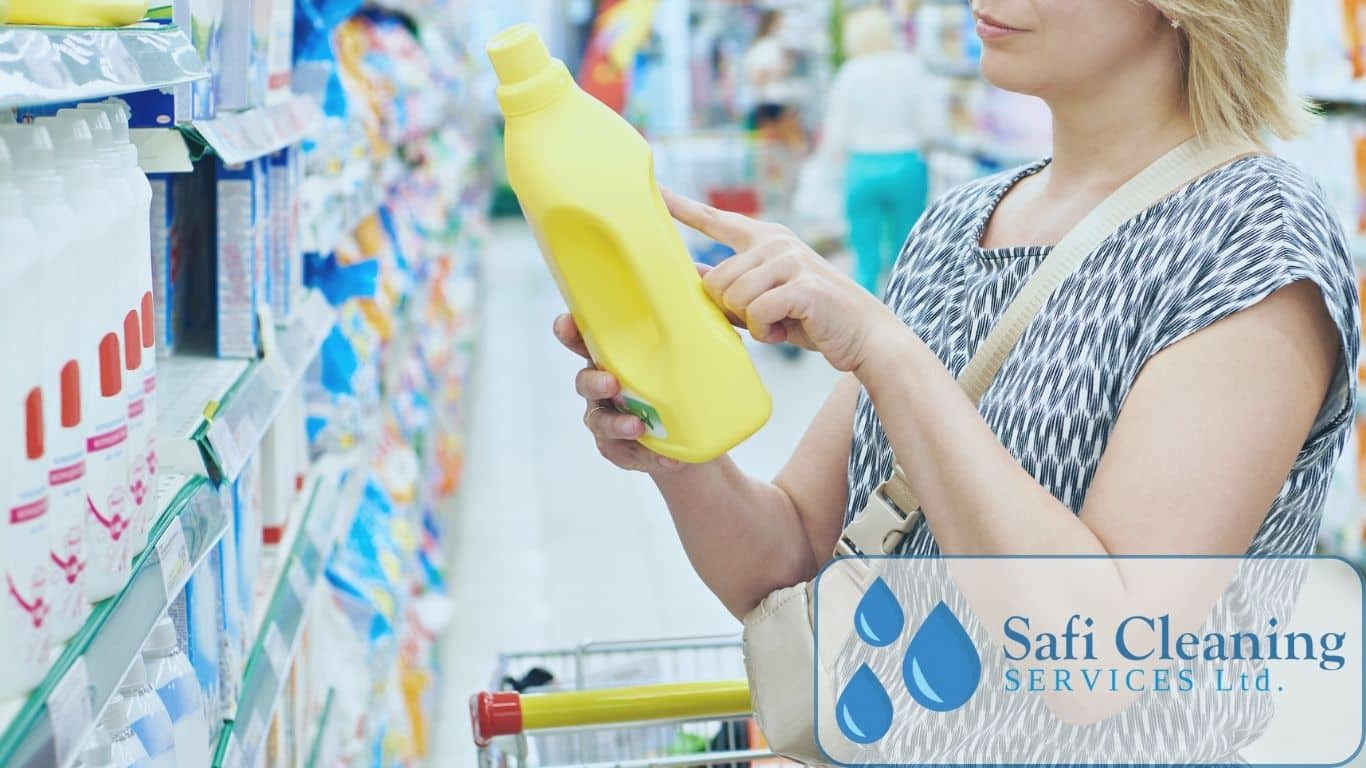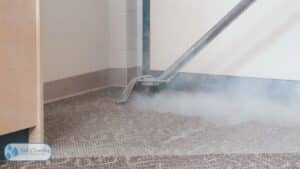Understanding the cleaning product ingredients we use every day is vitally important. The labels on these products don’t always tell the whole story about what’s inside and how those contents’ may affect our health and the environment.
This guide will serve as a useful resource to decipher ingredient lists and make informed choices. The potential hazards of many conventional cleaning products are concerning. Irritating fumes, toxic materials, and undisclosed components can cause issues ranging from headaches to cancer. Using such products regularly in our homes increases our exposure.
By learning to properly interpret ingredient lists, we gain the power to protect ourselves and our families. We can avoid red flags, recognize safer alternatives, and find products that clean effectively without unnecessary risks. Knowledge about cleaning ingredients gives us control.
The Significance of Household Cleaners
Cleaning products play a major role in maintaining safe, sanitary homes. However, the ingredients that make them effective can also inflict harm if used improperly. This presents an important consumer education opportunity.
Providing a Guide to Ingredient Literacy
This blog post will teach readers how to analyze ingredient lists. By spotlighting hazardous components and safer options, it enables better choices. The ultimate goal is a cleaning routine without health or environmental sacrifices.
What to Look for in Cleaning Product Ingredients
Cleaning product ingredients refer to the various components that make up the formulas of cleaners, disinfectants, and other household cleaning solutions. These ingredients work together to provide the cleaning action, fragrance, preservation, and other intended effects of the products.
Some common types of ingredients found in cleaning products include:
- Surfactants – These ingredients help lift dirt, grease, and stains from surfaces. Examples include sodium lauryl sulfate and ammonium lauryl sulfate.
- Solvents – Ingredients like alcohols and glycol ethers help dissolve grease, oils, and other stubborn soils.
- Builders/Chelating Agents – These help improve cleaning efficiency by softening water and preventing hard water film.
- Bleaches – Chlorine bleach and oxygen bleach whiten fabrics and remove stains by chemically altering dirt and soils.
- Fragrances – Added for aesthetic appeal. Can be synthetic or natural essential oils.
- Preservatives – Prevent growth of bacteria and other microbes in the products.
Reading and understanding cleaning product labels is important for choosing safe, effective, and environmentally-friendly solutions. Ingredient lists can reveal the presence of irritants, toxins, or chemicals linked to health issues. This allows consumers to avoid hazardous products.
Ingredient labels also provide transparency into what makes up a cleaner. This helps determine if the product uses greener chemistry principles with safer surfactants, non-toxic preservatives, plant-based solvents, etc. Conscientious consumers can support companies making efforts to formulate sustainable cleaning solutions.
Why Cleaning Product Ingredient Lists Matter
When scanning the back of a bottle of cleaning solution, it’s easy to gloss over the ingredient list. But taking a closer look is important – those chemical names actually reveal a lot about what you’re bringing into your home. Many conventional cleaners contain ingredients linked to health issues or environmental damage. Understanding what’s in your products helps you make informed choices to protect yourself and the planet.
The Health Risks of Hazardous Ingredients
Certain compounds commonly found in cleaners have been associated with:
- Respiratory irritation
- Headaches and dizziness
- Skin and eye damage
- Hormone disruption
- Cancer
For example, quaternary ammonium compounds, used as disinfectants and surfactants, can irritate lungs. Formaldehyde, added as a preservative, is a known human carcinogen. Even familiar ingredients like bleach can react with other chemicals to form dangerous byproducts. Identifying concerning ingredients allows you to find alternative products or take safety precautions.
The Environmental Toll
Ingredients washed down the drain end up in waterways, harming wildlife and ecosystems. Alkylphenol ethoxylates found in all-purpose cleaners are toxic to aquatic life. Phosphates in some detergents promote algal blooms that can choke waterways. Knowing what’s in your bottle makes it easier to choose products that are safer for the environment.
Informed Decision Making
Reading labels facilitates better choices by revealing potential hazards. You can avoid products with the most toxic chemicals or use them cautiously in well-ventilated areas while wearing gloves. Understanding ingredients also guides you toward safer alternatives like plant-based cleaners with fewer health and environmental risks. Equipped with knowledge of what’s in them, you can use cleaning products more responsibly.
How to Decipher Cleaning Product Ingredient Lists
Reading and understanding ingredient lists is key to making informed choices about the cleaning products you use. Here are some tips:
Look Up Unfamiliar Ingredients
Cleaning products often contain scientific-sounding names you may not recognize. Look up any ingredients you don’t know on reputable websites to learn about any potential hazards or health concerns. Resources like the Environmental Working Group’s Guide to Healthy Cleaning provide safety ratings for many common ingredients.
Watch Out for Danger Symbols
Ingredient lists may contain special symbols that indicate irritation, toxicity, or other risks associated with certain ingredients:

- Exclamation point – skin or eye irritant

- Flame icon – flammable ingredient

- Skull and crossbones – highly toxic if ingested
Understand Common Cleaning Agent Types
Knowing the different kinds of cleaning agents can help you identify potentially problematic ingredients:
- Surfactants – can be skin irritants for some people
- Solvents – often VOCs that can cause headaches or other issues
- Antibacterial agents – may contribute to antibiotic resistance with overuse
Choosing products with plant-based ingredients when possible can help avoid some potentially concerning chemicals. Contact manufacturers if you have questions about specific ingredients.
Taking the time to carefully read labels is an important step to finding cleaning products that get the job done without harming you or your family.
Conclusion
As we have seen throughout this guide, understanding the ingredients in your cleaning products is critically important. The use of hazardous chemicals in cleaners can pose risks to human health and the environment. By taking the time to read labels and research product contents, we can make informed choices to protect ourselves and our homes.
Ingredients like ammonia, chlorine, and formaldehyde are common in conventional cleaners and have been linked to issues like asthma, cancer, and hormone disruption. Even in small doses, these substances accumulate in our bodies over time. Seeking out safer alternatives whenever possible is the best way to limit exposure.
I encourage all readers to use the tips provided here to decipher ingredient lists. Look out for hazardous chemicals as well as vague labeling that obscures full disclosure.




